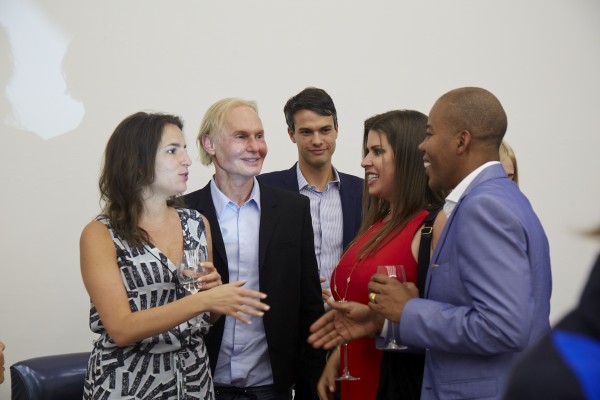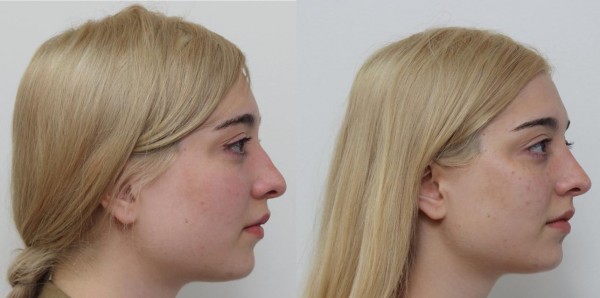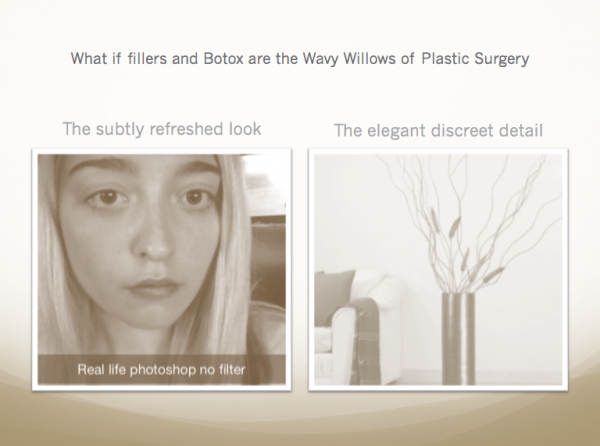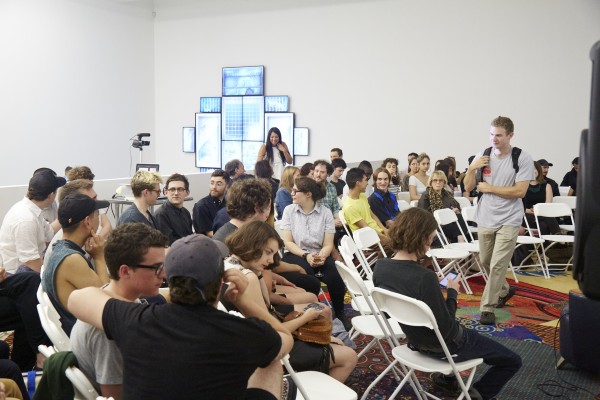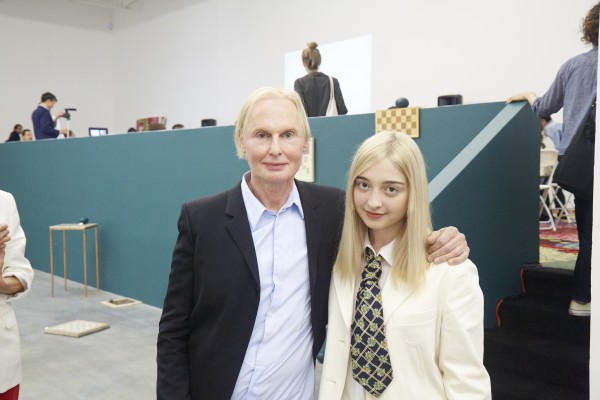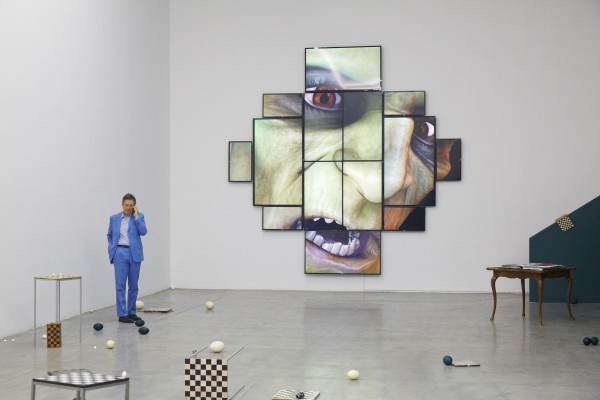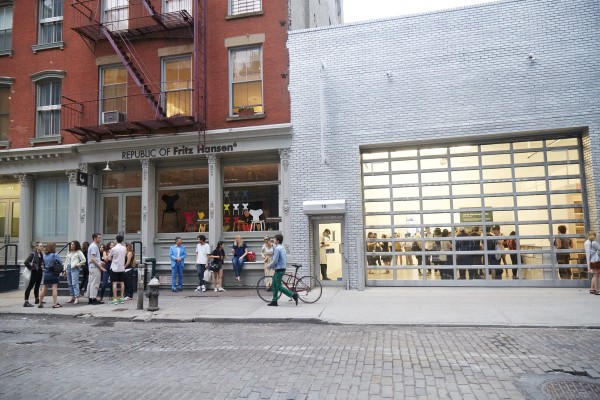Lafayette Anticipation associate curator Anna Colin talks to artist Tyler Coburn about Ergonomic Futures, a speculative project engaged with art, design, science, anthropology and writing. In this interview, Coburn discusses the research, production process and network of collaborators of a multilayered project ultimately concerned with the futures of humankind. Anna Colin: When one comes across your museum seats Ergonomic Futures (2016—) in contemporary art exhibitions—and soon in natural history, fine art, and anthropology museums—they look… [read more »]
Face to face with Amalia Ulman and Dr. Fredric Brandt
The truth is out: international artist Amalia Ulman had plastic surgery and discussed it in the context of art and beauty with celebrity cosmetic dermatologist Dr. Fredric Brandt.
Called the ‘King of Collagen,’ Brandt is a pioneer of a new regime of non-invasive plastic surgery described as the ‘New New Face.’ Gone are the days of the skin-tightening face lift, says Brandt: Now, patients want to walk out looking subtly refreshed and plush as a pin pillow.
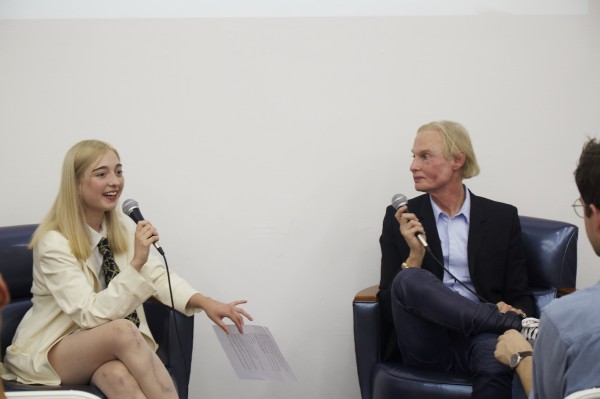
Amalia Ulman, left, interviews world-renowned cosmetic dermatologist Dr. Fredric Brandt Wednesday, June 4 at Swiss Institute of New York.
“The whole paradigm has shifted,” said Brandt, an outspoken and eerily ageless-looking character who raps and wears lace-up Givenchy sneakers. “Now, rather than reversing the aging process, people want to look constantly refreshed; they want to look better.”
Things got interesting Wednesday night at The Swiss Institute of New York, where guests gathered to hear Ulman interview Brant, a renowned surgeon and contemporary art collector.
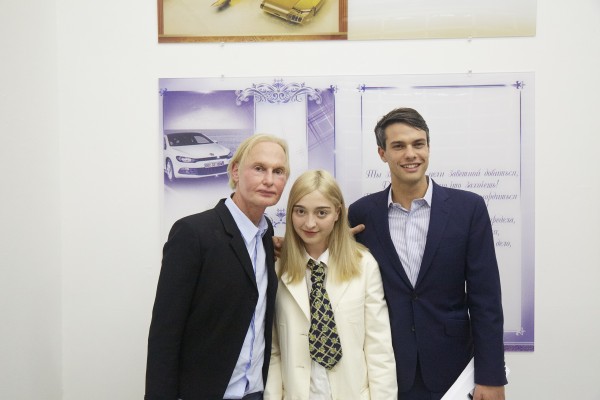
Dr. Brandt, Ulman and Simon Castets, Swiss Institute director and show curator, in front of Ulman’s work featured in “The St. Petersburg Paradox,” a group show running through Aug. 17 at Swiss Institute.
Intended to explore the relationship between identity, consumerism and beauty—key themes relative to both Brandt and Ulman’s work—the discussion ended up being more of a lively conversation about Brandt’s personal and professional philosophies.
Recently, Ulman underwent facial filler injections and a nonsurgical nose job in Beverly Hills, as a continuation of an ongoing research on middle brow aesthetics, elegance and discretion.
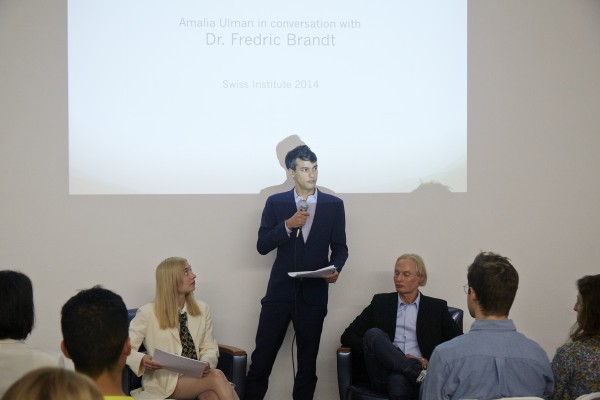
Swiss Institute head curator Simon Castets introduced the speakers and helped facilitate discussion.
A departure from the kitschy works of contemporary artists such as LaChapelle and Orlan, Ulman said she is more fascinated by the idea of bodies as objects and investments from a bland, cute and pretty point of view.
“What if fillers and Botox are the wavy willows of plastic surgery?” she asked, alluding to her previous essay on non-charismatic, almost invisible objects. “The difference is very difficult to see, yet very obvious at the same time.”
Ulman’s introduction marked the end of her speaking portion, as Brandt, who was eager to respond and frequently cut off Ulman’s questions mid-sentence, powered the remainder of the talk.
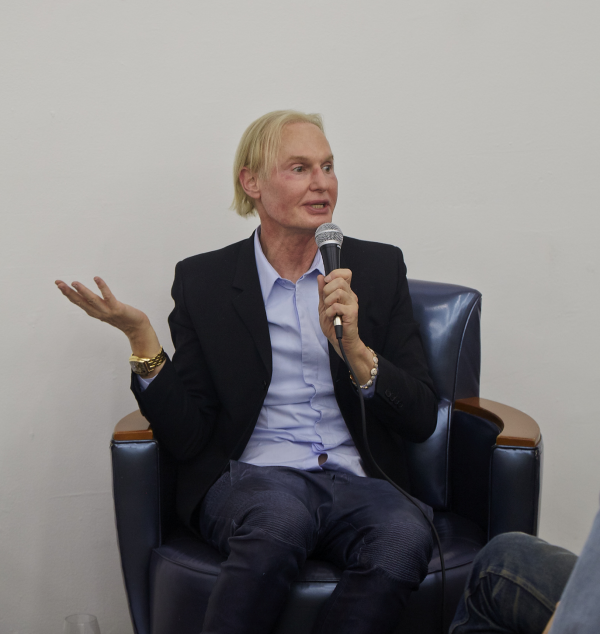
Brandt was eager to respond and frequently cut off Ulman’s questions mid-sentence, powering the majority of the talk.
“I had a patient come in a few months ago, and she is 50 years old,” Brandt said. “ I said, ‘don’t worry I’m going to make you look natural,’ and she goes to me, ‘honey, at 50 I don’t care about natural just make me look good!’”
There were glints of subjects that could have sparked rich topics of discussion—body anxiety, racial ‘correction’ surgery, and the electronic economy of looking good (or Photoshop)—but the conversation remained light and casual. Uncomfortable even.
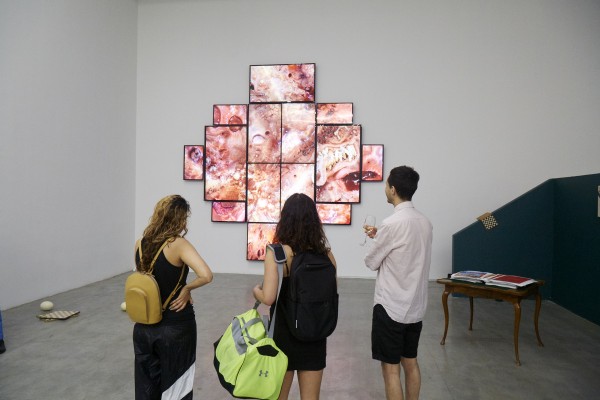
Guests view video installation art by Tabor Robak, on exhibit now at The Swiss Institute through Aug. 17
In attendance with Brandt was his publicist and a small posse of Brandt’s tender-faced clients.
Asked whether he felt Ulman’s face looked good post-surgery, Brandt replied, “I think you’re a pretty woman.”
An avid collector of contemporary art, Brandt’s Midtown office, as well as his apartments in Miami and New York, are filled with artists like Richard Prince, Yayoi Kusama and Anish Kapoor.
In the question-answer portion of the talk, one person asked Brandt to cite examples of art he finds beautiful. “I like my art to make me feel good,” Brandt said. “I don’t want a piece of art to make me depressed.”
Photos by Jesse Untracht-Oakner, courtesy of Swiss Institute
